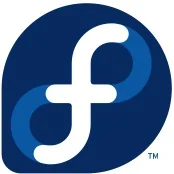Fedora Making Strides On Enabling Greater AI Use, Easier AMD ROCm PyTorch Acceleration

As Red Hat's Director for Desktop and other areas, Christian Schaller's blog posts are always interesting around where Fedora will be focusing more efforts moving forward. There remain longstanding objectives like bettering the Linux desktop HDR support while these days there is a lot of user/customer interest pushing towards more AI.
Some of the highlights from Christian's Fedora Workstation development update include:
- Red Hat is working on enabling their customers to make greater use of AI. In part with Fedora this is done through efforts like IBM's Granite AI models that are fully open, InstructLab for leveraging the Granite LLM models and begin teaching it new things, etc.
- Fedora is also working to ensure other large language models like Meta's Llama work well. Fedora continues working on enabling the AMD ROCm accelerated PyTorch for Fedora. Long-term Fedora wants to make it easy to run PyTorch on your hardware and enjoy CPU/GPU acceleration from all major vendors.
- There continues to be work on improving the NVIDIA proprietary driver experience on Fedora and making it easier to setup.
- Related in part to the NVIDIA efforts, Fedora by F41 Workstation is hoping to make it easy to self-sign kernel modules for use with Secure Boot.
- The Toolbx container tools are seeing improved NVIDIA driver integration.
- Improving the Linux desktop support around High Dynamic Range (HDR) displays remains ongoing.
- Better handling VR headsets with DRM leasing also is still being ironed out further.
- Explicit sync support has been coming together nicely from the Wayland desktops/compositors to the NVIDIA and Mesa drivers and other parts of the stack.
Learn more about these Fedora Workstation development efforts via Christian's blog.
17 Comments

